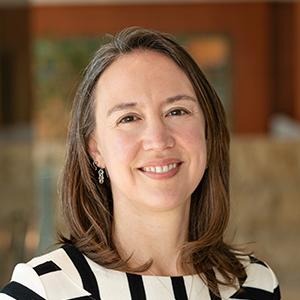For 50 years, the share of Americans who get married has been falling. This decline has occurred unevenly across the population, falling approximately 15 percentage points for Americans with a bachelor’s degree but 30 percentage points for Americans with a high school degree or less (Figure 1).
While marriage is a religious, social, and government institution, it is one with important economic implications. Married individuals have higher personal earnings, and households with married couples have greater resources, on average, which positively affects both their economic lives as well as those of their children. And even after controlling for income, research shows that married people have lower rates of mortality than unmarried individuals.
Economists are therefore interested in understanding why marriage rates have been declining. This question is at the heart of a new paper by Institute Director Abigail Wozniak and co-authors Michael T. Baker and Susan P. Carter (Institute Working Paper 107: “Peer Effects and Marriage Formation”). Social science research has examined many possible explanations for the decline, including changes in labor market opportunities for men, advances in fertility technology, and government transfer payments.
Wozniak and her co-authors are interested in a different possibility: that the marriage decisions of our peers influence our decision to marry. “Understanding the contribution of peers in marriage decisions is important because a key role for peers would mean marriage trends are self-reinforcing over time, which in turn affects the scope for policy,” the economists write.
A study of random peer groups
It is usually difficult to identify the effect of peer groups because we don’t choose our peers at random. Maybe married individuals have friends who are married because it’s something they have in common. That would be selection at work, not causality. Or, what might look like peer effects could actually be the result of an external event, such as a natural disaster or recession, that influences the marriage decisions of a group of people.
In order to overcome these difficulties, Wozniak and her co-authors use data on enlisted soldiers in the U.S. Army. The economists focus specifically on soldiers’ first assignment following basic training because soldiers have little ability to influence this assignment, and the Army has little information about the soldier other than some basic background information that the economists can also observe. This makes assignment to peer groups “conditionally random”—soldiers are not choosing their peer group.
Enlisted soldiers are also a relevant population to study because 94 percent have a high school degree or less, a group that has experienced a sharp decline in marriage rates.
The outcome the economists analyze is the marital status of an individual each month after they arrive at their initial assignment, which they model as a function of observed and unobserved individual and peer group characteristics. Their analysis finds that a peer group where all peers are married would increase the likelihood that an arriving soldier is married after 24 months by 6.3 percentage points. The effect is close to zero for the first year and then increases (Figure 2). This suggests the process of peer group influence takes place over time, which is how we would expect peer group influence to work.
To ensure that these results are not driven by a common environmental or institutional factor, such as changes to the local labor market or the unit commander, the economists also measure the marital status of the peer group six months before they arrive at the current location. The results using this treatment variable are very similar.
With their data, the economists are able to look at how peer groups influence soldiers of different races and ethnicities. They find that Black and Hispanic soldiers are more affected by their initial peer group than White soldiers are, and the effect persists for longer for Black soldiers in particular. However, other characteristics, such as the location of the unit, the soldier’s age, and the soldier’s education, appear to make little difference on the size of the effect of the peer group.
How do peer groups influence individual marriage decisions? One possibility is that individuals decide to marry to conform to the norms of the group. It is also possible that married soldiers provide access to information or social connections that increase the probability of marriage. Both mechanisms are plausible in the Army, and the economists find evidence that both may be operating.
While the effect of peer groups found here is not large relative to the marriage impact of Army service overall, it does influence the formation of a meaningful number of marriages. The effect is also comparable to other situational factors that economists have found affect marriage rates, such as dependent coverage eligibility under the Affordable Care Act.
Furthermore, the size of the effect found here could reflect limits of this setting. In particular, the economists study the effect of peer groups for only 24 months. That’s not all that long a time, particularly given that the average age of the sample of enlisted soldiers is around 21, which is younger than the average age of first marriage in the American population. In addition, the peer groups are newly formed and tend to transition fairly quickly, as soldiers are usually reassigned every two to three years. For these reasons, the estimate of the effect of peers in this paper may understate their influence in other situations or the cumulative effect over time.
Read the Institute working paper: Peer Effects and Marriage Formation
Lisa Camner McKay is a senior writer with the Opportunity & Inclusive Growth Institute at the Minneapolis Fed. In this role, she creates content for diverse audiences in support of the Institute’s policy and research work.




